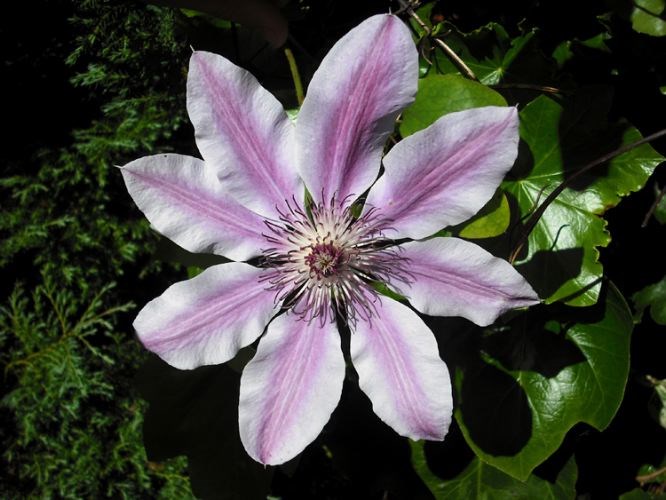Clematis is one of the most exotic, beautiful flowering vines that are hardy enough to grow in our Zone 3 Prince George climate. It is a deciduous, vining perennial, perfect for climbing along a fence, trellis, pergola, wall, or existing tree trunk, as they can grow anywhere from three to nine metres tall.
Clematis vines continue to be attractive even after they have finished flowering because the finished flowers form fluffy seed clusters which will add weeks of enjoyment.
To successfully grow clematis, provide a warm sunny wall where shade is available for the roots. clematis roots like to be cool but the vine itself enjoys five to six hours of daily sun.
Morning sun is best and to keep the roots cool place a good layer of mulch around the base of the plant, or plant a low-growing, shallow-rooted ground cover near the base of the plant.
There is some confusion when it comes to pruning a clematis.
If a clematis is pruned wrong it could potentially mean less flowers, so it is important to know which variety of clematis you have. Clematis varieties are broken into three groups, A, B, C, or 1, 2, 3.
It is important to know what group your clematis falls into as each group has different pruning requirements, so check the label as it will be listed.
A or 1 types are the early bloomers, bearing flowers on the previous year's shoots in mid spring/early summer. These need very little to no pruning.
Damaged and weak stems should be removed as they occur. Other than that, pruning can be done to keep the plants to a certain size. If you are going to prune, do it right after they have finished blooming.
Group B or 2 varieties bloom in late spring or early summer on both last season's and the current season's growth. They actually bloom from side shoots off the old growth.
This group can be broken down even further, to a sub-group that has one heavy flush of flowers followed by a smaller flush later in the season, and the other sub group which has varieties that bloom continually throughout the summer.
If the old flowers from the first flush of flowers are removed before they form seed heads, there will be a larger second flush of flowers. The B or 2 group varieties are pruned in May.
They can have a light clipping by snipping the branches to various lengths to produce an evenly-shaped plant and then the branches are spaced out to make room for next year's flowers.
Group C or 3 varieties such as viticellas, Jackmanii types, bloom throughout the summer on the current year's growth. These varieties do best with a good pruning in May as you want to promote lots of new growth.
Prune them back to two strong sets of buds per stem from ground level.
If left unpruned, they will start their new growth close to where last year's growth ended, resulting in flowers on only part of the plant.



